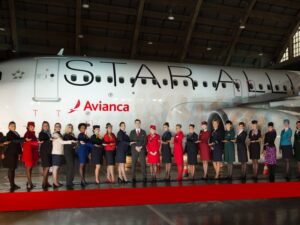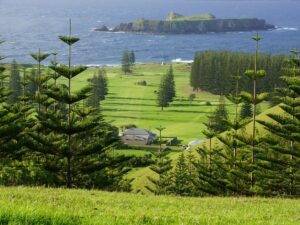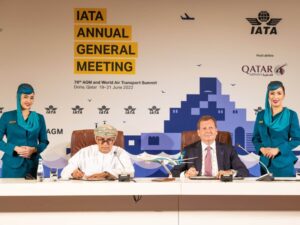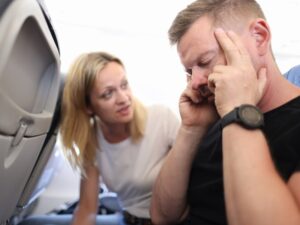
Earlier this week, a Singapore Airlines Boeing 777 flying from London to Singapore encountered severe turbulence over Myanmar. One passenger on SQ321 sadly died. Dozens more were taken to hospital with injuries after the pilots diverted to Bangkok.
Severe turbulence to this degree is extremely rare. Most flights are relatively smooth, and even when there is turbulence, it rarely causes injuries. But flying is unpredictable, and there is always a small chance of hitting unexpected turbulence.
Last year, a British Airways flight from Singapore to London (the opposite direction of SQ321) had to return to Singapore after severe turbulence injured multiple crew members. And two months ago, 50 passengers were injured when a LATAM flight from Sydney to Auckland suddenly pitched down sharply. That particular incident was not caused by a weather event, but the effect was the same. Those are just two more examples.
Most flights are certainly not this eventful, and my intention in drawing attention to this is not to scare anyone about flying. Overall, flying remains one of the safest modes of transport! But I do want to highlight one of the best defences available against turbulence: seatbelts.
The risks of turbulence
There have been some media reports claiming that SQ321 “plunged 6,000 feet” due to the turbulence, but that is incorrect. The pilots intentionally descended during that phase of flight as they were preparing to divert the plane to Bangkok (and probably hoping for some clearer air at a lower altitude).
Planes are designed to fly safely through pretty much any weather conditions. Commercial airliners don’t fall out of the sky due to turbulence at cruising altitude.
Passengers are at risk, however, of hitting the ceiling or getting struck by loose objects if the plane hits strong turbulence.
Studies have shown that climate change will cause turbulence to get stronger in years to come, so this risk isn’t going away.
If you’re worried about turbulence, or want to learn more about the topic from a pilot’s perspective, this video from Petter Hörnfeldt (a.k.a. Mentour Pilot) is highly informative:
Always keep your seatbelt fastened while seated
Luckily, seatbelts exist. They are specifically designed to protect passengers from sudden movements.
This is why airlines always ask you to keep your seatbelt fastened whenever you’re seated, even when the sign is off. In fact, Qantas specifically lists this is a requirement passengers must obey in its conditions of carriage.
Initial reports are that none of the passengers who were wearing a seatbelt on SQ321 went to hospital. It’s a timely reminder to always keep your seatbelt on when sitting down.
But that’s not the only thing I think the aviation industry should take away from this accident.
Airlines also have a responsibility
I hope that this accident also prompts a discussion about how airlines themselves use the seatbelt sign.
Even if you keep your seatbelt fastened while seated, the reality is that it’s not practical to remain in your seat for an entire 13-hour flight from London to Singapore. Passengers need to use the bathrooms, stretch their legs and retrieve items from the overhead bins. The cabin crew are also constantly on their feet, providing meals and attending to passengers. (This is a major reason why a disproportionately high percentage of people injured by turbulence are flight attendants.)
Sometimes turbulence comes without warning. But, often, the pilots will have a heads-up as they’ll be able to see the weather ahead on their radar screens. They also have access to weather forecasts, and may receive reports of turbulence from air traffic control or other pilots who have recently flown through the same airspace.
When pilots believe turbulence may be ahead, they have a great tool at their disposal: the “fasten seatbelt” sign. By turning this on, they can warn passengers and cabin crew in advance that it’s a good idea to sit down and buckle up.
Frustratingly, I often see airlines overusing the seatbelt sign to the point that everyone ignores it. This isn’t specifically an observation about Singapore Airlines, but airlines in general.
I’ve flown with a lot of different airlines in different parts of the world. Their approaches to using the seatbelt sign vary enormously.
How Qantas pilots use the seatbelt sign
I think Qantas really gets this right. It seems to be company policy that the pilots switch off the seatbelt sign as soon as it’s safe after take-off, then switch it back on shortly before landing. The seatbelt sign stays off for the rest of the flight, unless there is actual or expected turbulence. Once the risk of turbulence has passed, pilots promptly switch the seatbelt sign off again.
In addition, when the seatbelt sign is illuminated on Qantas flights, all the flight attendants also return to their seats. It sends a very clear message: When the seatbelt sign is on, it’s serious. Buckle up.

Other airlines adopt different approaches
Last month, I flew with Iberia on a trans-Atlantic flight. Iberia’s approach to the seatbelt sign was the complete opposite to Qantas – it was kept on for almost the entire ten-hour flight. I’ve also experienced this on long flights with avianca and Air China.
On this particular Iberia flight, it was indeed a bit choppy during the start and middle of the flight. But once the turbulence had passed, the pilots never switched the seatbelt sign back off. At some point, passengers and cabin crew just started ignoring it. And I don’t really blame them – you can’t be expected to stay seated for ten hours!

Overuse of the seatbelt sign leads to complacency
If there had actually been severe turbulence coming up on that Iberia flight, passengers and crew would have been walking around the cabin despite the seatbelt sign ostensibly being on.
In North America, I often find that the seatbelt sign is kept on during the entire climb and descent phases of the flight – so, around the first and last 30-40 minutes of the flight – even if the flying conditions are smooth. This often seems a bit overkill.
On some overseas airlines, I also regularly see cabin crew walking around and continuing their service while the seatbelt sign is on. Whether they realise it or not, doing this sets an example for passengers that they can just ignore the seatbelt sign as well.
At some point, I have to wonder if airlines are using the seatbelt sign primarily as a way to limit their own liability, rather than in a way that actually maximises safety.
When airlines abuse the seatbelt sign by keeping it on unnecessarily for hours at a time, people ignore it. And then, when there actually is turbulence, people are less likely to take the warning seriously. It’s a case of “the boy who cried wolf”.
For what it’s worth, passenger reports from SQ321 claim that the seatbelt sign was on during the turbulence incident. But there were still a lot of passengers and crew walking around at the time. This may be because the seatbelt sign hadn’t been on long enough yet for everyone to get a chance to sit down – or because some people were simply ignoring it. It’s probably a combination of both.
An investigation will examine the details of this particular accident. But I hope this prompts airlines globally to reflect on how they use the seatbelt sign.














































































Community Comments
Loading new replies...
Join the full discussion at the Australian Frequent Flyer →